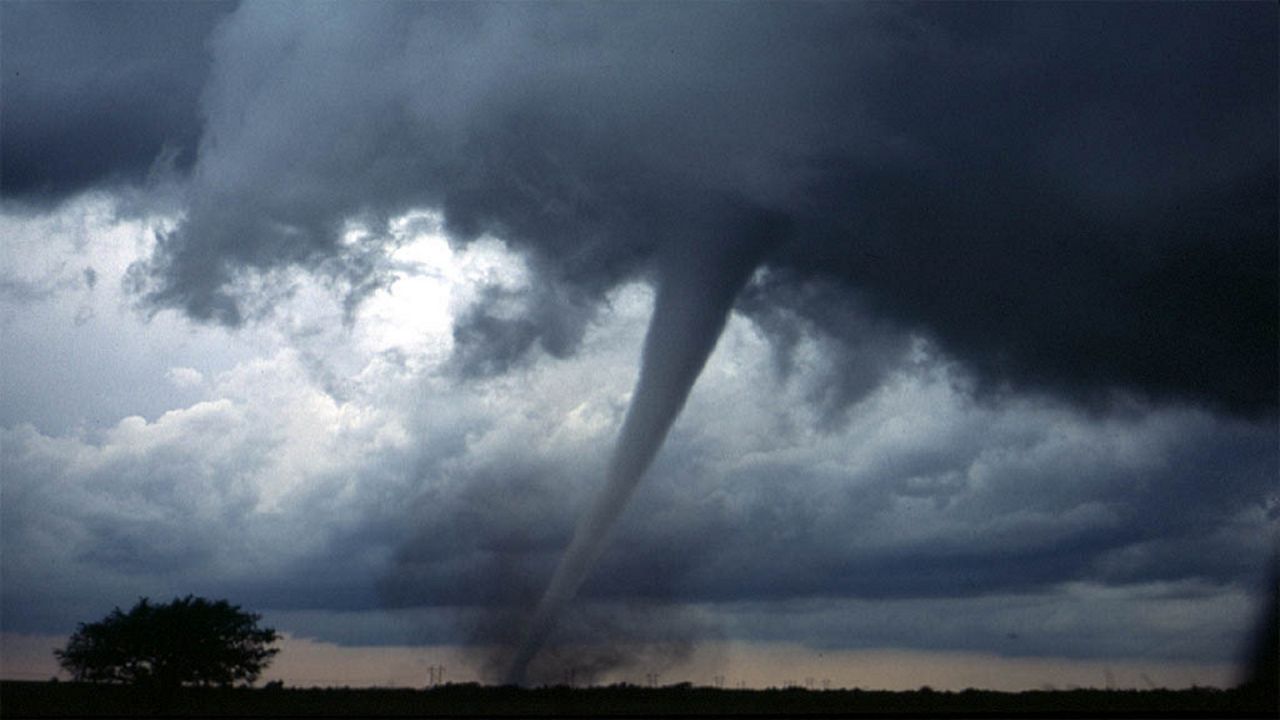Tornadoes are one of the most violent and destructive forces on Earth reaching speeds in excess of 200 miles per hour. Sometimes, tornadoes can clear a path a mile wide and travel more than 50 miles. A tornado is simply a violently rotating column of air that extends from the storm to the ground.
A tornado must be in contact with the ground to be classified as such. When it does not reach the ground, it is called a funnel cloud. A tornado over water is called a waterspout and these tend to be much weaker than tornadoes.
While tornadoes can happen around the world, the United States is a global hotspot with nearly 1,000 tornadoes reported annually. The most destructive tornadoes tend to favor the Great Plains, otherwise known as “Tornado Alley.”
Florida averages more tornadoes per square mile but most tornadoes in Florida are weak, short-lived and produce minimal damage.
Tornadoes are classified by the damage they produce. Meteorologist survey tornado damage to rate the strength of a tornado using the Enhanced Fujita Scale (EF Scale). This scale ranges from EF-0 to EF-5 with EF-5 being the most destructive.
The Enhanced Fujita Scale used to classify a tornadoes is below.
EF-Rating |
Estimated Winds |
EF-0 |
65-85 mph |
EF-1 |
86-110 mph |
EF-2 |
111-135 mph |
EF-3 |
136-165 mph |
EF-4 |
166-200 mph |
EF-5 |
Above 200 mph |
Meteorologists still have a lot to learn about tornadoes including exactly how and why they form. One big question meteorologists are trying to answer is why some thunderstorms produce tornadoes and others do not. Scientists will continue to conduct research on these storms with a common goal to provide more warning-time before a tornado strikes.
Even though there’s a lot to learn about tornadoes, there is also a lot that meteorologist do know about tornadoes. Meteorologist know what environments are favorable for tornadic development and when a forecaster recognizes these environments, a risk for severe thunderstorms or tornadoes is added to the forecast.
An environment known to cause tornadoes is where two air masses collide. Typically, this occurs when a cold, dry air mass clashes with a warm, humid air mass. Often times, the jet stream is roaring tens of thousands of feet above the ground and if all of these ingredients exist, the risk for tornadoes increase.
These ingredients tend to come together over the Great Plains. Tornadoes are especially common over the Great Plains during the spring when cold Canadian air clashes with warm, humid air from the Gulf of Mexico. When these air masses collide over the Great Plains, the atmosphere becomes unstable and cause air to rise.
The rising air is known as an updraft that can extend thousands of feet in the air. The rising air also creates a large thunderstorm that can extend more than 60,000 ft in the sky! The updraft begins to interact with the jet stream way up in the sky causing the updraft to spin.
The jet stream is a fast current of air located tens of thousands of feet above the ground. The winds within the jet stream can exceed 200 mph! These wind speeds can change with altitude and that can cause a thunderstorm to rotate.
A thunderstorm that begins to rotate becomes a supercell thunderstorm. Eventually a funnel cloud begins to form. If the rotation is strong enough then the funnel extends to the ground creating a tornado.
This process can happen very quickly, sometimes in a matter of minutes! The fastest wind speeds on Earth can happen inside a tornado. If one touches down, don’t try to outrun it. They move at an average speed of 30 mph and that tornado can have winds greater than 200 mph, destroying everything in its path.
The safest place to be during a tornado is inside a sturdy building, away from windows, lowest level of your home and inside the most interior room such as a closet. This will help protect you from flying debris as the tornado passes by.
A saying to remember that can save your life during a tornado is, “if a tornado is around, get low to the ground.”
Experiment: Your Spin On The Tornado
Purpose: To demonstrate how rotating a storm can create a tornado
*We are simulating a rotating updraft. Air is a fluid, so we can pretend the water inside the bottle is the air. Wind shear (strong winds that change direction) causes a storm to rotate and produce a tornado.
What you need:
- 2 two liter plastic bottles
- Water
- Glitter (makes the tornado more visible) or food coloring
- Masking Tape
Procedure:
1. Fill one plastic bottle with water
2. Place a bunch of glitter inside the bottle
3. Use masking tape and tape the second bottle to the top of the bottle filled with water. Make sure you use plenty of tape, creating a secure and sturdy seal around the two bottles.
4. Flip the bottles around so the water filled bottle is on top. Be sure to hold onto the taped portion so the top bottle doesn’t fall off.
5. With one hand on the neck of the bottle and the other on the top bottle, begin moving it around in a circle so the water starts to rotate inside the bottle.
6. Watch and observe results!
Results: Soon after rotating the bottles, a mini tornado formed inside the bottle.
Conclusion: Tornadoes are produced from rotating thunderstorms. When the bottles were spun, it simulated a rotating thunderstorm. Shortly after, a tornado formed inside the bottle simulating that of a thunderstorm.



